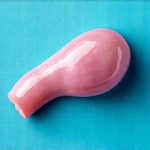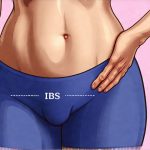The aftermath of a digestive flare – whether from Irritable Bowel Syndrome (IBS), Inflammatory Bowel Disease (IBD), food sensitivities, or simply an upset stomach – can leave you feeling drained, uncomfortable, and searching for relief. Often, the initial focus is on stopping the acute symptoms: cramping, bloating, diarrhea, or constipation. However, the period following a flare—the recovery phase—is equally crucial for restoring gut health, replenishing nutrients lost, and gently easing your system back to normalcy. Many people overlook this vital stage, rushing back to their normal diets too quickly, which can inadvertently trigger another episode. This article explores foods that support gentle recovery after a digestive flare, focusing on nourishment, soothing inflammation, and rebuilding a calmer digestive landscape.
Recovering from a flare isn’t about restriction alone; it’s about strategic reintroduction and mindful choices. The goal is to provide your gut with easily digestible nutrients while avoiding further irritation. This means prioritizing foods that are bland, low in fiber initially, and easy on the system. It also involves understanding your personal triggers – what specifically sets off your flares – and adjusting your diet accordingly. What works for one person might not work for another, making individualized approaches paramount. The following information isn’t meant to replace professional medical advice but offers a starting point for building a supportive dietary strategy during recovery.
The Foundation: Soothing & Easily Digestible Foods
The very first step after the acute phase of a flare subsides is focusing on foods that won’t exacerbate symptoms and will actively soothe your digestive tract. This typically means adopting what’s often called a “low-residue” diet for a short period, minimizing overall gut activity to allow healing to take place. Think of it as giving your digestive system a much-needed rest. The emphasis shifts towards foods that require minimal effort to break down and absorb.
Foods like well-cooked white rice, plain toast (made with gluten-free bread if sensitivity is present), bananas, applesauce, and boiled potatoes are excellent starting points. These foods provide carbohydrates for energy without placing a significant burden on the gut. Broth-based soups – clear chicken or vegetable broth – offer hydration and electrolytes which can be depleted during diarrhea or vomiting. Lean proteins like poached chicken or white fish (cooked simply, avoiding heavy seasonings) can also be introduced in small quantities as tolerance allows. Remember to listen to your body; if a food causes even slight discomfort, remove it temporarily and try again later. Prioritizing hydration is key, and considering hydration-supportive foods can be particularly beneficial during recovery.
It’s important to avoid foods that are known irritants during this phase. This includes: – Highly processed foods – Fatty or fried foods – Spicy foods – Caffeine – Alcohol – Dairy (if lactose intolerant) – High-fiber foods – raw vegetables, whole grains, beans, legumes. The length of time you remain on a simplified diet depends on the severity of your flare and how quickly your symptoms subside; typically ranging from several days to a week or more.
Rebuilding & Nourishing: Gentle Reintroduction
As your digestive system begins to calm, you can start gradually reintroducing foods. This is not a race! The key here is slow and steady. Introducing too many new foods at once can overwhelm your gut and lead to another flare-up. Start with small portions of easily digestible foods that weren’t part of the initial simplified diet.
Fermented foods, like plain yogurt (dairy-free alternatives are available), kefir or even a small amount of sauerkraut can be incredibly beneficial for rebuilding gut flora. These foods contain probiotics – beneficial bacteria that support healthy digestion and immune function. However, introduce these cautiously, as some individuals may find them initially irritating. Similarly, lean proteins like baked chicken or turkey can be slowly incorporated into your diet. As you tolerate more foods, consider incorporating cooked vegetables (like carrots or green beans) and fruits (peaches or pears) in small quantities. Monitor how your body reacts to each new food before adding another. Keeping a food diary can be an invaluable tool during this phase, helping you identify potential triggers and understand what your gut can comfortably handle. You might also find it helpful to review food choices that support pelvic muscle recovery during this sensitive time.
The goal is to gradually expand your dietary options while remaining mindful of any developing symptoms. If bloating or cramping returns after introducing a specific food, remove it from your diet for a period before attempting reintroduction later on. This process helps you pinpoint your individual sensitivities and create a long-term sustainable eating plan.
Hydration & Electrolyte Replenishment
Diarrhea and vomiting – common symptoms of digestive flares – can lead to significant fluid and electrolyte loss, leaving you feeling weak and fatigued. Prioritizing hydration is paramount during the recovery phase. Water should be your primary beverage choice, but supplementing with electrolyte-rich fluids is also crucial.
- Oral rehydration solutions (ORS) are specifically formulated to replenish lost electrolytes like sodium, potassium, and magnesium.
- Coconut water is a natural source of electrolytes, offering a refreshing alternative.
- Herbal teas – chamomile or ginger tea – can be soothing and hydrating while potentially aiding digestion (ginger is known for its anti-nausea properties).
Avoid sugary drinks, caffeinated beverages, and alcohol, as these can further dehydrate you or irritate your digestive system. Sip fluids throughout the day rather than drinking large amounts at once. Aim for clear or pale yellow urine, indicating adequate hydration. Consider adding a pinch of sea salt to your water to help with electrolyte absorption.
The Role of Fiber – A Gradual Approach
Fiber is essential for overall gut health but can be problematic immediately after a flare. During the acute phase, minimizing fiber intake allows your digestive tract to rest and heal. However, completely eliminating fiber long-term isn’t ideal. As you recover, gradually reintroduce soluble fiber sources, which are generally easier to digest than insoluble fibers.
- Soluble fiber dissolves in water, forming a gel-like substance that can soothe the digestive tract. Sources include oats (cooked), bananas, applesauce, and cooked carrots.
- Insoluble fiber, on the other hand, doesn’t dissolve in water and adds bulk to stool, which can be irritating during recovery. Found in whole grains, raw vegetables and bran.
Start with small portions of soluble fiber-rich foods and monitor your tolerance. If bloating or cramping occurs, reduce the amount or temporarily remove the food from your diet. Over time, you can slowly increase your intake as your gut heals. Remember that everyone reacts differently to fiber; what one person tolerates well, another might not.
Mindful Eating & Stress Management
Diet is only one piece of the puzzle when it comes to digestive recovery. Mindful eating – paying attention to your body’s hunger and fullness cues, chewing food thoroughly, and eating in a relaxed environment – can significantly improve digestion. Avoid eating on the go or while distracted, as this can lead to improper digestion and discomfort.
Stress is also a major trigger for many digestive conditions. Incorporating stress-reducing techniques into your daily routine can help calm your nervous system and support gut health. Understanding post-stress recovery methods may also offer additional benefits.
- Deep breathing exercises
- Yoga or meditation
- Gentle exercise (walking, swimming)
- Spending time in nature
- Engaging in hobbies you enjoy
These practices not only reduce stress but also promote overall well-being, which is crucial for long-term digestive recovery. Remember that healing takes time and patience – be kind to your body and prioritize self-care throughout the process. Consider creating a calming evening routine to further support your well being.





















